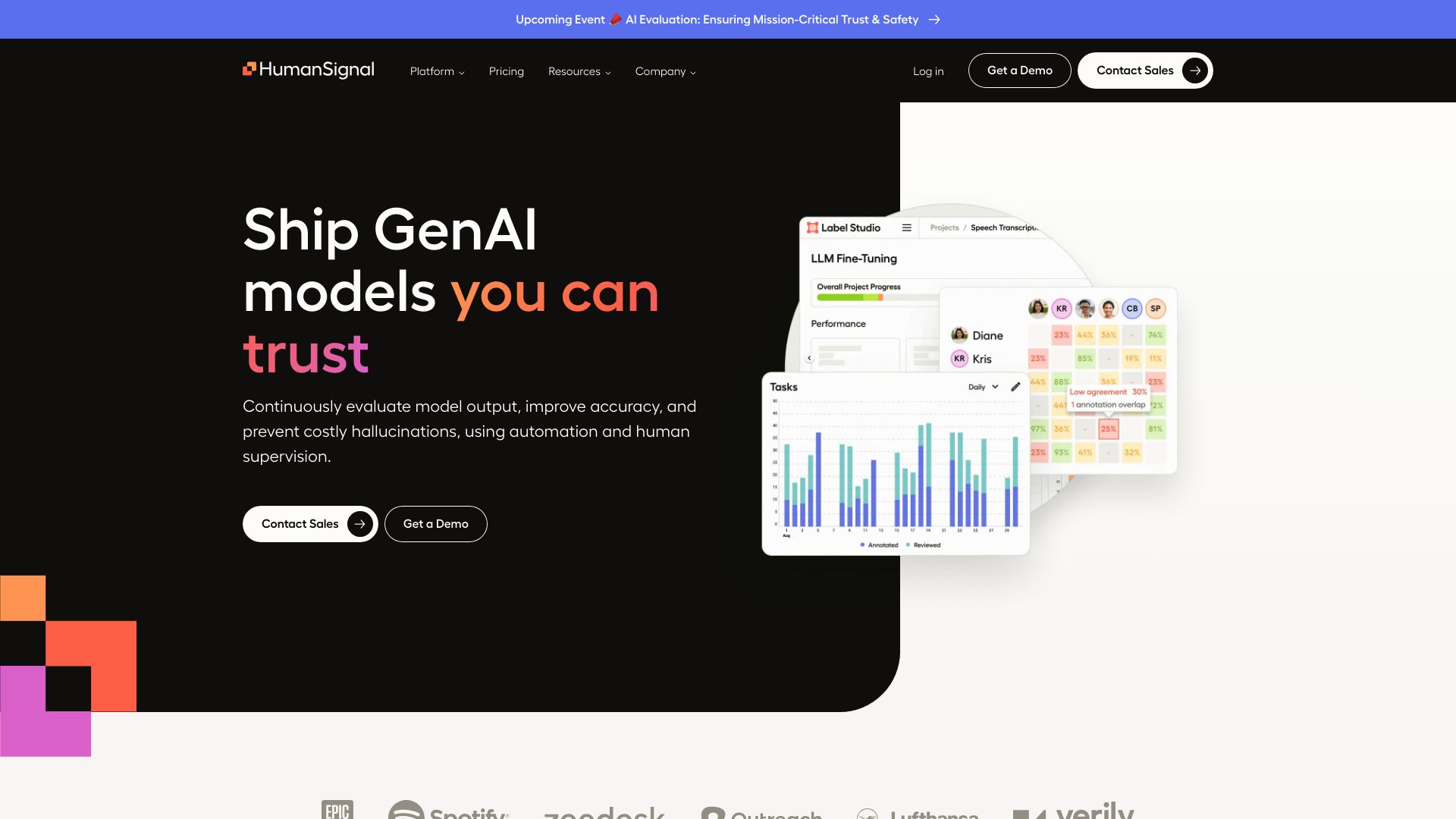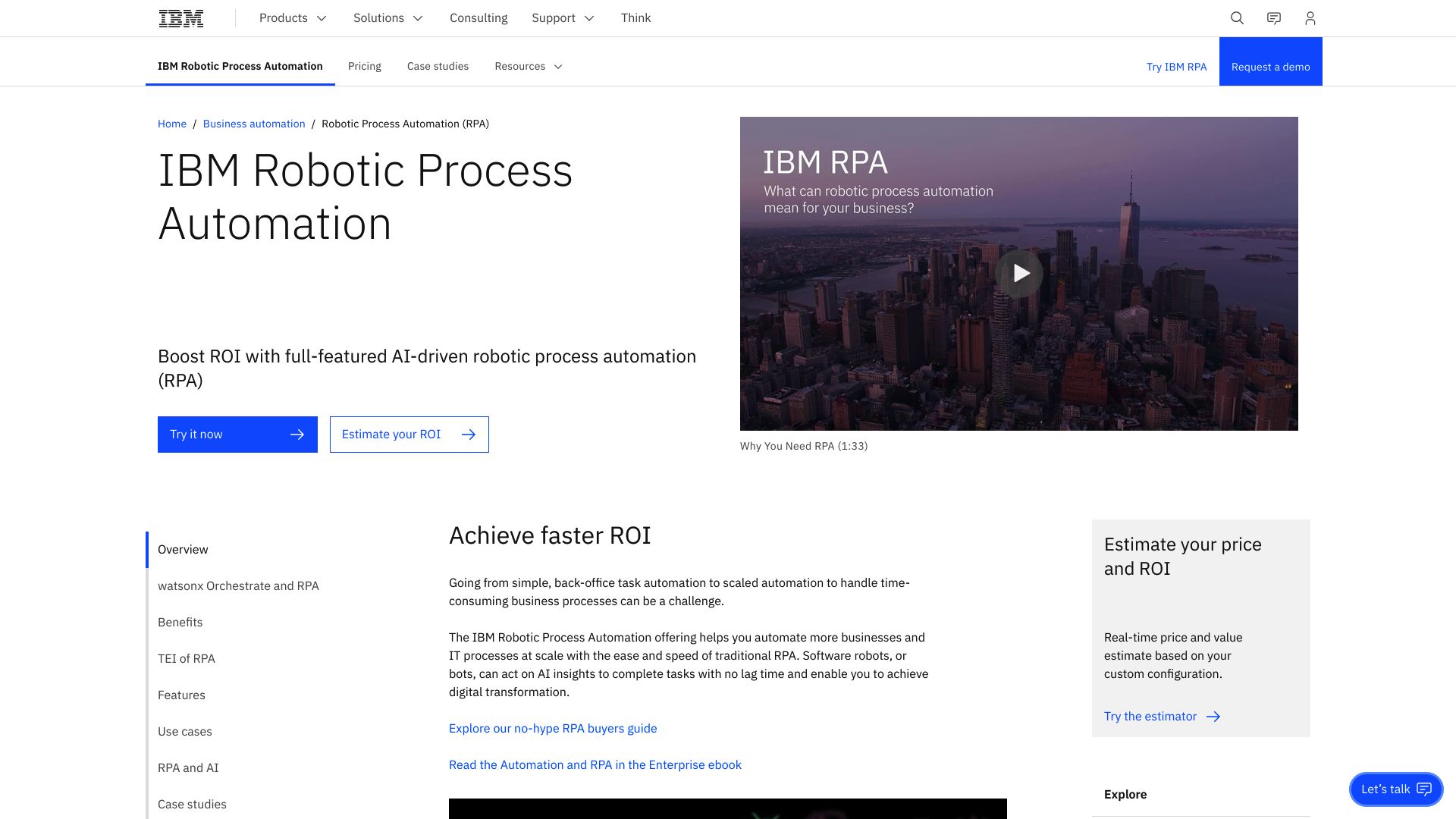Adala vs. IBM RPA: AI-Powered Automation Compared
Artificial intelligence transforms business processes, but choosing the right platform can be daunting. This comparison of Adala vs. IBM RPA, and SmythOS illuminates the strengths and limitations of each solution. Adala excels in autonomous data labeling, while IBM RPA focuses on robotic process automation for enterprises.
SmythOS emerges as a versatile contender, offering AI-powered automation accessible to both technical and non-technical users. We’ll explore how these platforms tackle security, scalability, and integration, helping you identify the best fit for your organization’s unique needs and technical capabilities.
Adala Overview
Adala marks a significant advancement in autonomous data labeling technology. This open-source framework empowers developers to create, train, and manage AI agents specifically designed for data labeling tasks. Adala’s agents leverage large language models like GPT-3 as their core runtime, enabling them to acquire and refine specialized skills such as text classification, summarization, and question answering.
Adala marks a significant advancement in autonomous data labeling technology. This open-source framework empowers developers to create, train, and manage AI agents specifically designed for data labeling tasks.


Adala’s strength lies in its modular architecture, which fosters extensibility and community contributions. The platform supports both short-term and long-term memory for agents, allowing them to learn from past interactions and continuously improve their performance. This iterative learning process, combined with the ability to request human feedback, ensures high-quality, reliable data labeling results.
Adala’s strength lies in its modular architecture… The platform supports both short-term and long-term memory for agents, allowing them to learn from past interactions and continuously improve their performance.
While Adala excels in creating autonomous data labeling agents, it lacks certain features found in more comprehensive AI development platforms. The framework does not include a visual builder or no-code editor, which may limit accessibility for non-technical users. Additionally, Adala does not offer built-in multimodal capabilities or specific integrations with services like Hugging Face or Zapier.
Despite these limitations, Adala’s focus on data labeling efficiency and quality makes it a valuable tool for organizations dealing with large datasets. The platform’s ability to deploy multiple agents with different skills, coupled with its support for human-in-the-loop processes, enables sophisticated data processing workflows. Adala’s emphasis on explainability and transparency also aligns well with the growing demand for trustworthy AI systems in various industries.
IBM RPA Overview
IBM Robotic Process Automation (RPA) empowers organizations to automate repetitive digital tasks across enterprise applications. This software creates “bots” that interact with user interfaces just like humans, streamlining workflows and boosting efficiency.
IBM RPA’s cloud-based platform offers both development and production environments for bot creation and deployment. Its visual, low-code interface enables users to build automation workflows through intuitive drag-and-drop actions. Bots can be triggered via schedules, APIs, on-demand requests, or even integrated with chatbots for seamless automation.
IBM RPA empowers organizations to automate repetitive digital tasks… This software creates “bots” that interact with user interfaces just like humans, streamlining workflows and boosting efficiency.
IBM RPA scales effectively through distributed runtime environments and orchestration processes. The platform integrates with common enterprise applications like Office, SAP, Java, and web apps, allowing bots to automate a wide range of business processes. Robust monitoring, analytics, and auditing capabilities provide visibility into bot performance and ROI.


While IBM RPA offers powerful automation capabilities, it focuses primarily on mimicking human actions rather than incorporating advanced AI for complex decision-making. The platform may require significant IT resources for implementation and maintenance, potentially limiting accessibility for smaller organizations or those with limited technical expertise.
IBM RPA positions itself as an enterprise-grade solution, emphasizing security, compliance, and integration with existing IT infrastructure. This approach caters well to large corporations but may be overkill for simpler automation needs. The software’s learning curve and enterprise focus could make it less appealing for small businesses or individual developers seeking quick, lightweight automation solutions.
Feature Comparison
Adala and IBM RPA offer distinct approaches to automation, with notable gaps in their feature sets. Adala focuses on autonomous data labeling using AI agents, while IBM RPA emphasizes robotic process automation for business tasks.
In core components, Adala provides a framework for creating AI agents that can learn and improve their data labeling skills over time. It supports both short-term and long-term memory, allowing agents to retain context and learn from past interactions. IBM RPA, on the other hand, lacks advanced AI capabilities, instead focusing on mimicking human actions to automate repetitive tasks. This creates a significant feature gap in terms of intelligent decision-making and adaptability.
Regarding security features, IBM RPA offers robust enterprise-grade security measures, including data encryption and integration with existing IT infrastructure. Adala’s open-source nature may provide more flexibility, but it lacks explicit mentions of advanced security features like OAuth or IP control. This security gap could be a concern for organizations handling sensitive data.
| Adala | IBM RPA | SmythOS | |
|---|---|---|---|
| CORE FEATURES | |||
| AI Agents | ✅ | ❌ | ✅ |
| Hosted Agents (Dev, Production) | ❌ | ✅ | ✅ |
| Visual Builder | ❌ | ✅ | ✅ |
| No-Code Options | ❌ | ✅ | ✅ |
| Memory & Context | ✅ | ❌ | ✅ |
| Autonomous Agents | ✅ | ❌ | ✅ |
| Explainability & Transparency | ✅ | ❌ | ✅ |
| Debug Tools | ❌ | ✅ | ✅ |
| Multimodal | ❌ | ❌ | ✅ |
| Problem-Solving Capabilities | ✅ | ❌ | ✅ |
| Multi-Agent Collaboration | ❌ | ❌ | ✅ |
| Audit Logs for Analytics | ❌ | ✅ | ✅ |
| Work as Team | ✅ | ❌ | ✅ |
| SECURITY | |||
| Constrained Alignment | ✅ | ❌ | ✅ |
| Data Encryption | ❌ | ✅ | ✅ |
| OAuth | ❌ | ❌ | ✅ |
| IP Control | ❌ | ❌ | ✅ |
| COMPONENTS | |||
| Foundation AIs | ✅ | ❌ | ✅ |
| Huggingface AIs | ❌ | ❌ | ✅ |
| Zapier APIs | ❌ | ❌ | ✅ |
| All other APIs, RPA | ❌ | ✅ | ✅ |
| Classifiers | ✅ | ❌ | ✅ |
| Data Lakes | ❌ | ❌ | ✅ |
| DEPLOYMENT OPTIONS (EMBODIMENTS) | |||
| Deploy as Webhook | ❌ | ❌ | ✅ |
| Staging Domains | ❌ | ❌ | ✅ |
| Production Domains | ❌ | ❌ | ✅ |
| API Authentication (OAuth + Key) | ❌ | ❌ | ✅ |
| Deploy as Site Chat | ❌ | ❌ | ✅ |
| Deploy as Scheduled Agent | ❌ | ✅ | ✅ |
| Deploy as GPT | ✅ | ❌ | ✅ |
| DATA LAKE SUPPORT | |||
| Hosted Vector Database | ✅ | ❌ | ✅ |
| Sitemap Crawler | ❌ | ❌ | ✅ |
| YouTube Transcript Crawler | ❌ | ✅ | |
| URL Crawler | ❌ | ❌ | ✅ |
| PDF Support | ❌ | ✅ | ✅ |
| Word File Support | ❌ | ✅ | ✅ |
| TXT File Support | ❌ | ✅ | ✅ |
Best Alternative to Adala and IBM RPA
SmythOS stands out as the premier alternative to Adala and IBM RPA, offering a comprehensive AI automation platform that combines the best of both worlds. Our solution provides a powerful, user-friendly environment for creating and deploying AI agents across a wide range of use cases.
Unlike Adala’s narrow focus on data labeling or IBM RPA’s limited robotic process automation, SmythOS delivers a versatile platform capable of handling complex AI tasks. We offer an intuitive drag-and-drop interface that simplifies agent creation, allowing users of all skill levels to build sophisticated AI solutions without extensive coding knowledge.
SmythOS delivers a versatile platform capable of handling complex AI tasks… allowing users of all skill levels to build sophisticated AI solutions without extensive coding knowledge.
SmythOS excels in its extensive feature set, surpassing both Adala and IBM RPA in critical areas. While Adala lacks hosted environments and IBM RPA misses out on advanced AI capabilities, SmythOS provides both development and production environments, along with cutting-edge AI functionalities. Our platform supports multimodal interactions, problem-solving capabilities, and multi-agent collaboration — features absent in both Adala and IBM RPA.
Security and scalability set SmythOS apart from the competition. We implement robust security measures, including data encryption and OAuth authentication, addressing enterprise-level concerns that Adala’s open-source approach may overlook. Unlike IBM RPA’s limited deployment options, SmythOS offers flexible deployment as APIs, webhooks, scheduled agents, and more, ensuring scalability for businesses of all sizes.
By choosing SmythOS, users gain access to a comprehensive ecosystem of AI tools and integrations. Our platform supports various AI models, APIs, and data sources, providing unparalleled flexibility compared to Adala’s specialized framework or IBM RPA’s narrow automation focus. With SmythOS, the possibilities for AI-driven innovation are truly limitless.
Conclusion
Adala and IBM RPA each offer unique approaches to automation, yet SmythOS stands out as the superior choice for organizations seeking comprehensive AI-powered solutions. Adala excels in autonomous data labeling but lacks the broad applicability and user-friendly interface that modern businesses require. IBM RPA provides robust process automation for enterprises but falls short in advanced AI capabilities and accessibility for smaller teams.
SmythOS combines the strengths of both platforms while addressing their limitations. Our intuitive drag-and-drop interface empowers users of all technical backgrounds to create sophisticated AI agents. Unlike Adala’s narrow focus or IBM RPA’s rigid structure, SmythOS offers unparalleled versatility. From API integrations to chatbots, scheduled tasks to GPT deployments, we provide the tools to automate and enhance virtually any business process.
Security, scalability, and integration capabilities set SmythOS apart. While IBM RPA targets large enterprises, we deliver enterprise-grade features without sacrificing agility or ease of use. Our platform’s support for multiple AI models, extensive API connections, and advanced deployment options ensure that your AI solutions can grow and adapt alongside your business.
Ready to experience the future of AI-driven automation? Create a free SmythOS account today and discover how our platform can transform your workflows, boost productivity, and drive innovation across your organization.
Last updated:
Disclaimer: The information presented in this article is for general informational purposes only and is provided as is. While we strive to keep the content up-to-date and accurate, we make no representations or warranties of any kind, express or implied, about the completeness, accuracy, reliability, suitability, or availability of the information contained in this article.
Any reliance you place on such information is strictly at your own risk. We reserve the right to make additions, deletions, or modifications to the contents of this article at any time without prior notice.
In no event will we be liable for any loss or damage including without limitation, indirect or consequential loss or damage, or any loss or damage whatsoever arising from loss of data, profits, or any other loss not specified herein arising out of, or in connection with, the use of this article.
Despite our best efforts, this article may contain oversights, errors, or omissions. If you notice any inaccuracies or have concerns about the content, please report them through our content feedback form. Your input helps us maintain the quality and reliability of our information.
